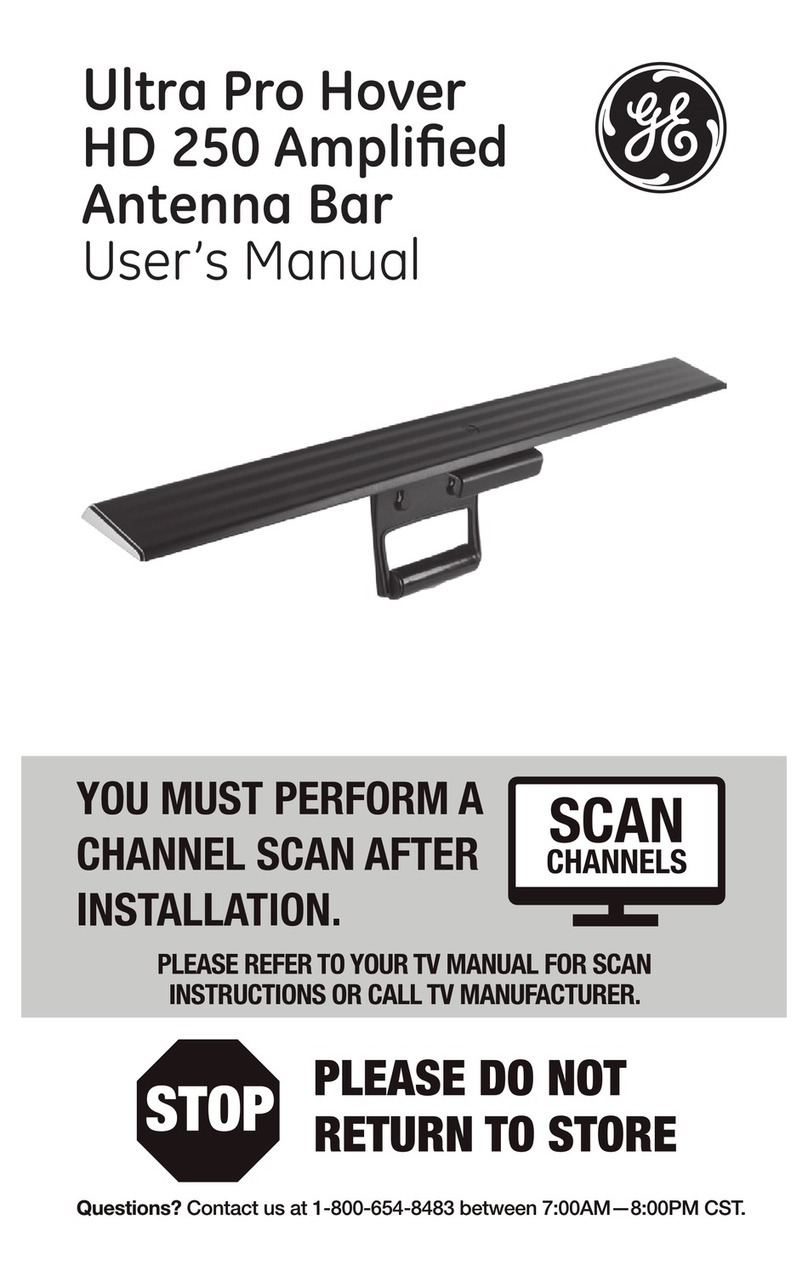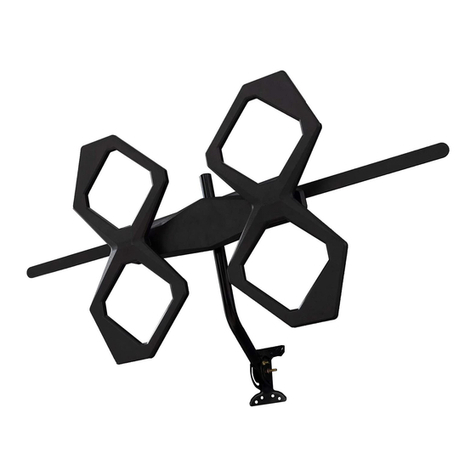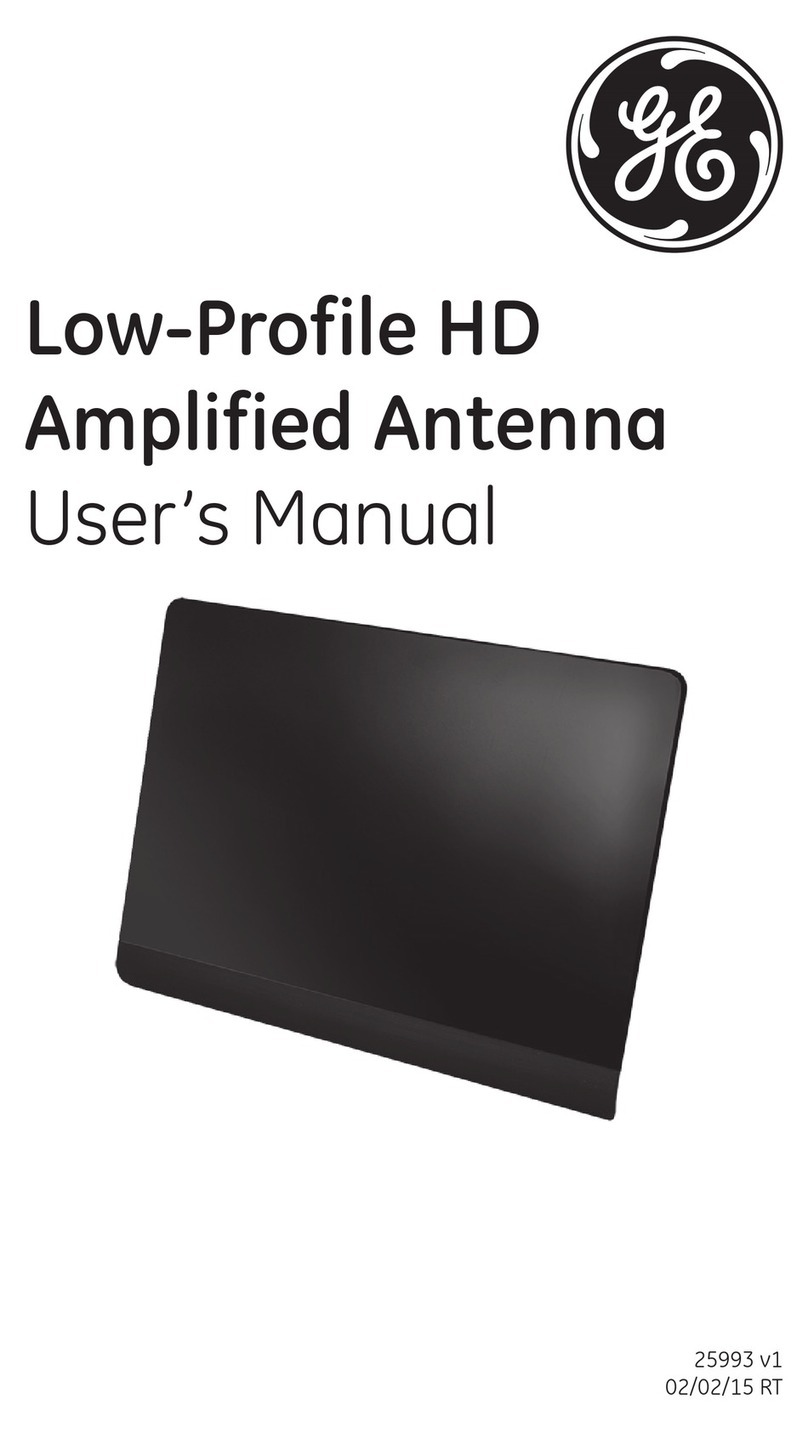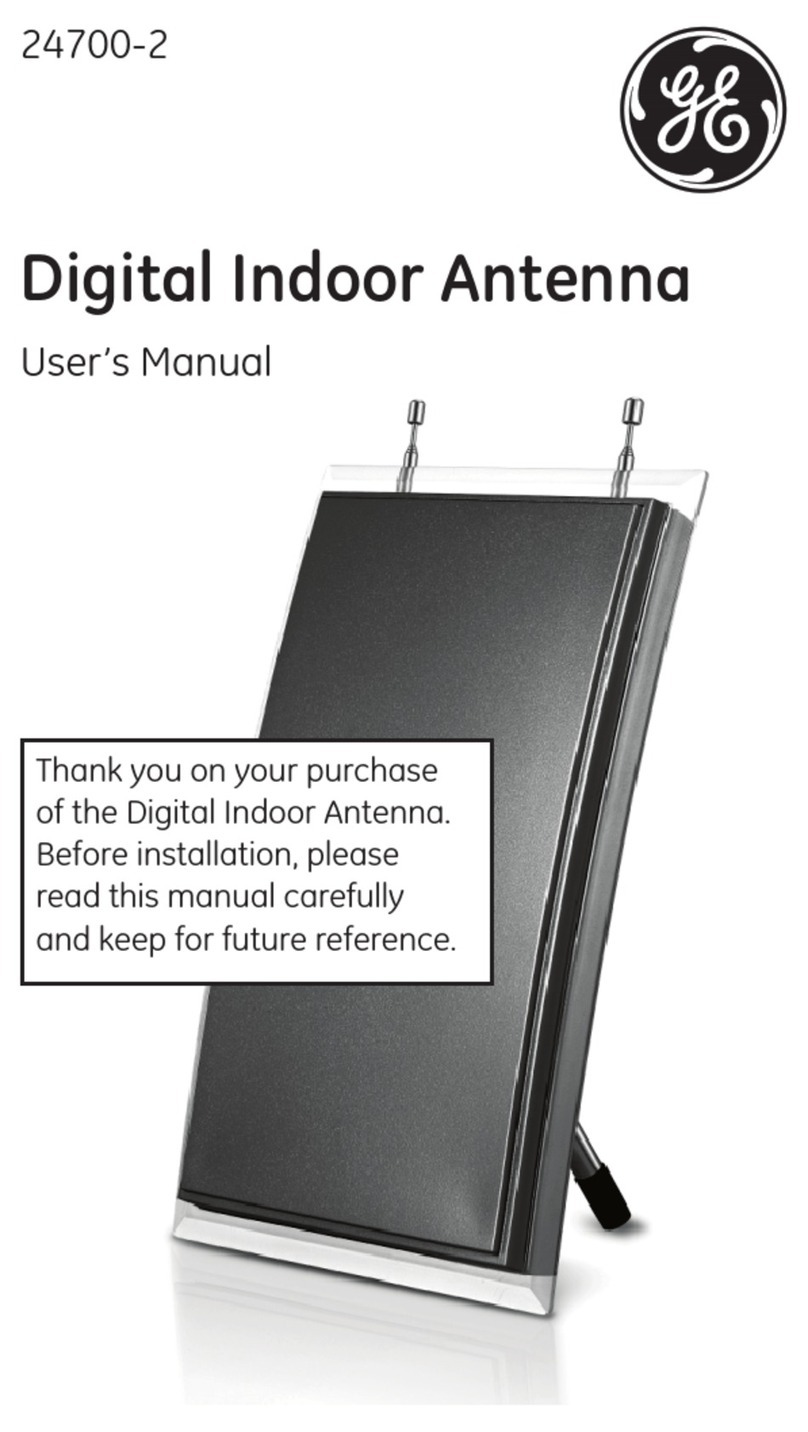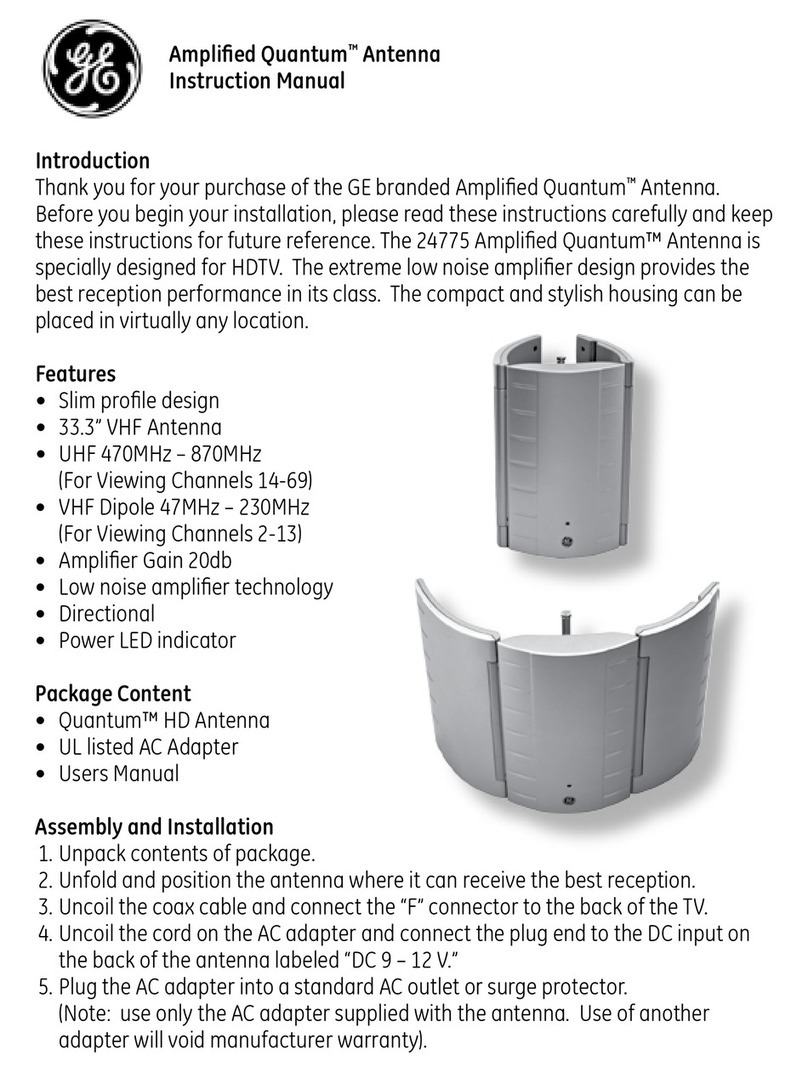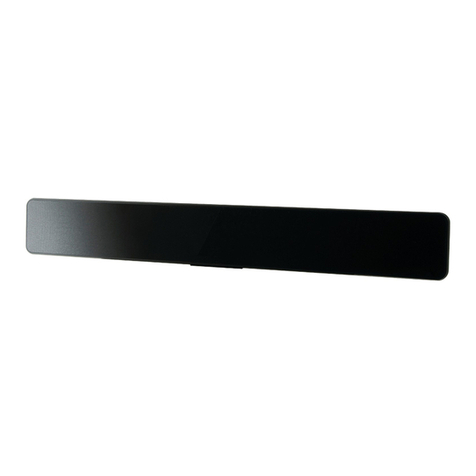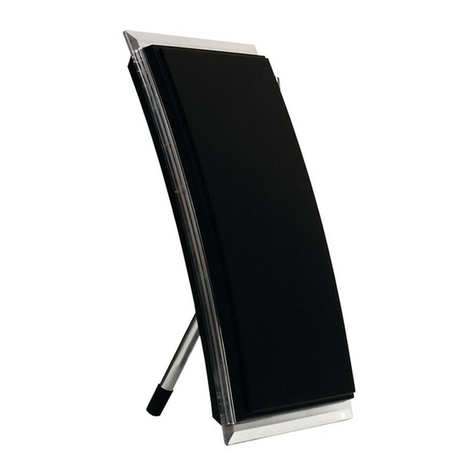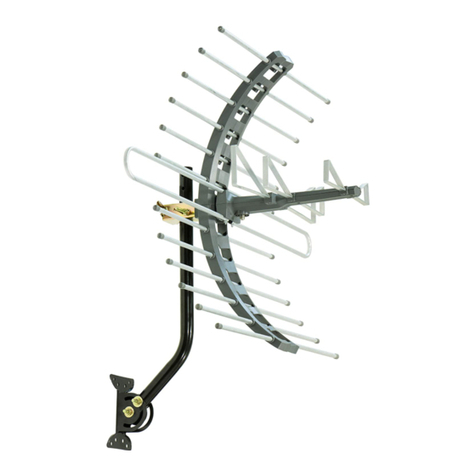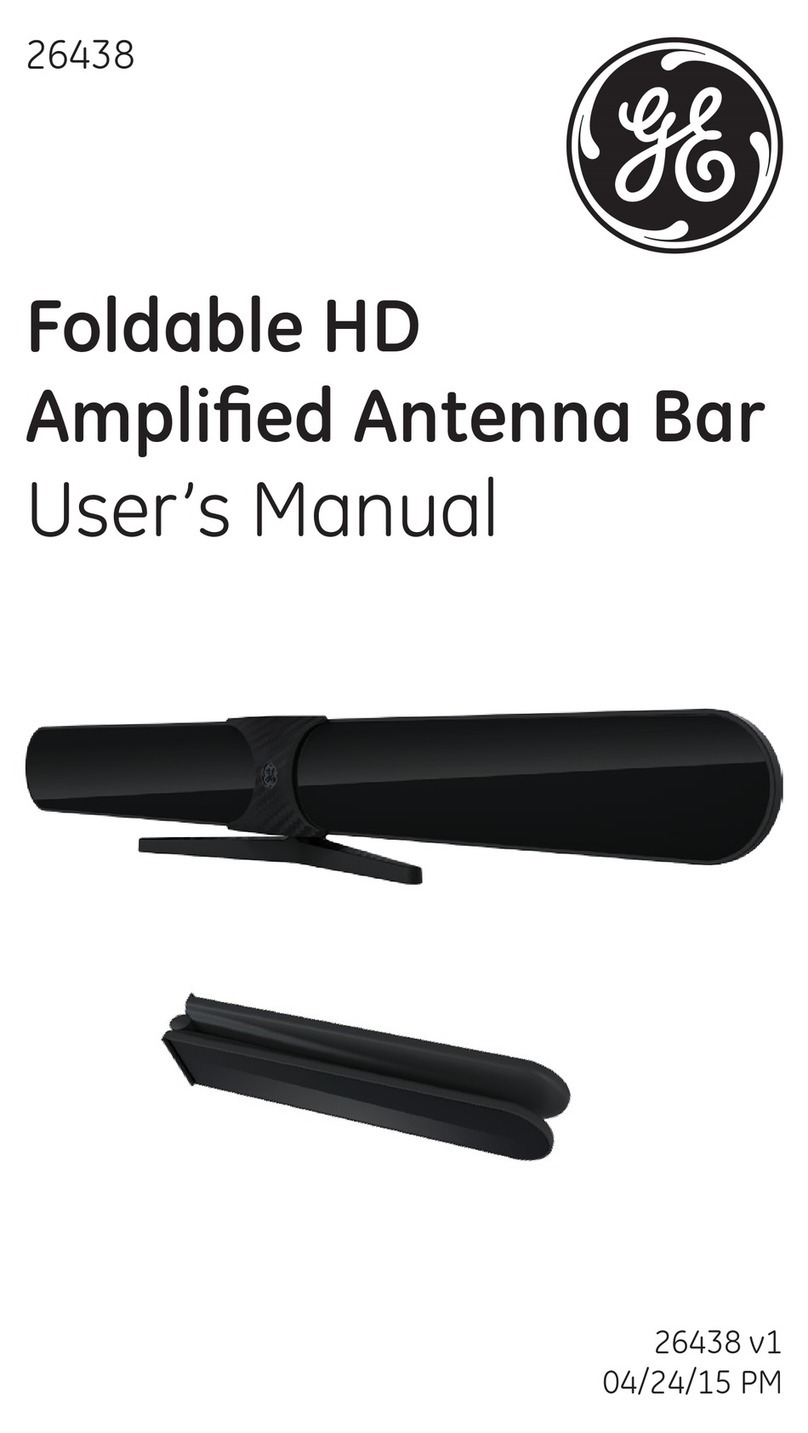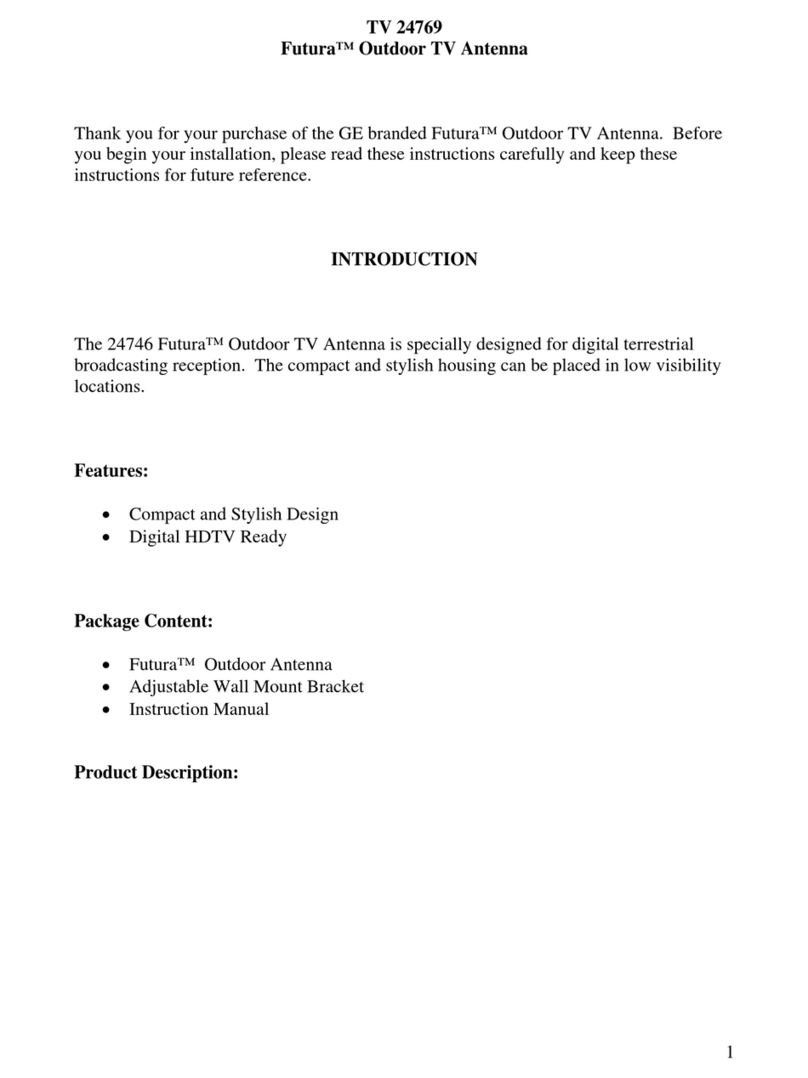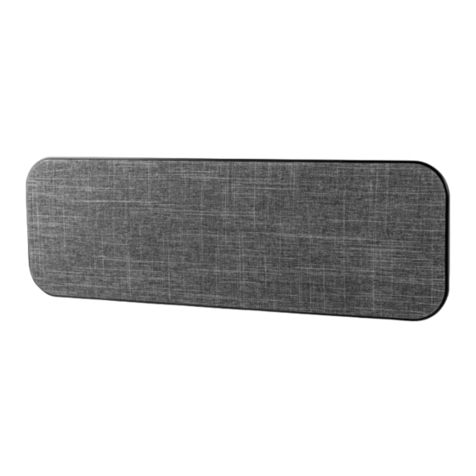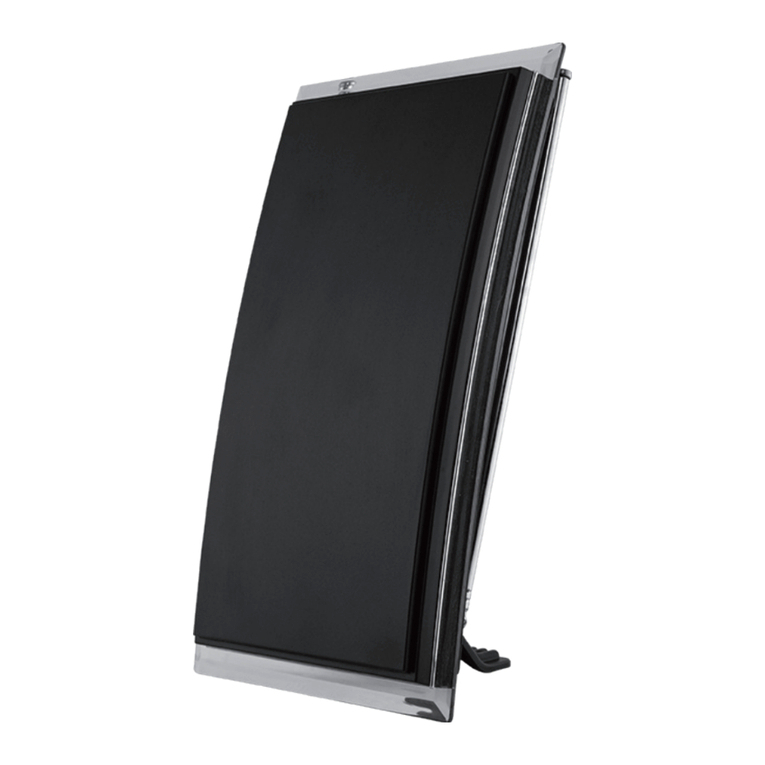
18 19
SELECCIONE Y MIDA EL LUGAR DE LA INSTALACIÓN
Cuando seleccione el lugar de instalación de la antena:
1. Elija un lugar SEGURO lejos de líneas eléctricas. Mantenga
la distancia entre las líneas eléctricas y la antena y su
estructura de montaje de un mínimo de dos veces la
altura combinada de la antena y la estructura de montaje.
Consulte las Instrucciones importantes de seguridad.
2.
Determine la ubicación de las torres de transmisión en su
área. Apunte la antena hacia dichas torres. Recursos en
línea, como www.antennaweb.org y www.dtv.gov, pueden
ayudar a identificar la ubicación de las torres de transmisión
en su área y los canales que puede esperar recibir.
3. Revise los códigos eléctricos y de construcción de su
ciudad y su estado. Asegúrese de que su instalación
planificada es segura y cumple con todos los códigos,
normas y reglamentos aplicables.
SI NO ESTÁ SEGURO O NO SE SIENTE CAPAZ
DE INSTALAR ESTA ANTENA, PÓNGASE EN
CONTACTO CON UN INSTALADOR PROFESIONAL.
INSTRUCCIONES IMPORTANTES DE SEGURIDAD
• NUNCA toque cualquier OBJETO o PERSONA en contacto
con una línea eléctrica. Puede electrocutarse. En caso de
un accidente o una emergencia, llame inmediatamente al
911 para pedir ayuda.
• INSPECCIONE detenidamente el lugar de la instalación en
relación con líneas eléctricas. Asegúrese de que no existe la
posibilidad de que la antena, la estructura de montaje o su
escalera puedan tener contacto con líneas eléctricas. Tenga
en cuenta lo que puede salir mal durante la instalación.
• MANTENGA la distancia entre las líneas eléctricas y la
antena y su estructura de montaje de un mínimo del
doble de la suma de la altura combinada de la antena
y la estructura de montaje. En caso de que la antena
se caiga durante o después del montaje, debe haber
suficiente distancia para asegurarse de que no tenga
contacto con las líneas eléctricas.
• CONECTE A TIERRA la antena y la estructura de montaje
de la antena de acuerdo con el código eléctrico NEC y todos
los requisitos de los códigos eléctricos estatales y locales.
• NO use una escalera de metal ni instale la antena en un
día ventoso. Si la antena o el mástil comienzan a caerse,
no intente sujetar la antena.
• ACTÚE con prudencia cuando trabaje sobre el techo.
• PEGUE la etiqueta de peligro incluida en la base de la
estructura de montaje de la antena.
• INFORME a las demás personas del peligro de tocar las
líneas eléctricas o tocar otros objetos en contacto con
líneas eléctricas.
• PÓNGASE EN CONTACTO con un instalador profesional
para instalar la antena si no está seguro de cómo instalar
esta antena y conectarla a tierra de forma segura.
